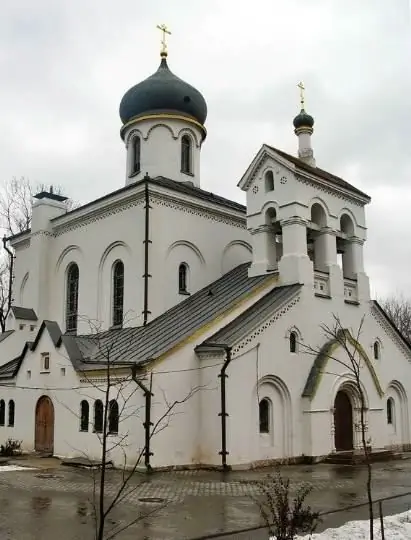
Description of the attraction
The Old Believer Church of the Intercession of the Most Holy Theotokos of the Ostozhensk community was founded in 1907 in Turchaninov Lane. This place in Moscow was considered traditionally Old Believers. Here since the 18th century there was a modest two-storey clerk's house, which was the first place of prayer for the Old Believers.
In 1905, these lands were bought by a representative of the famous and powerful Ryabushinsky clan - S. P. Ryabushinsky. He allocated land for the construction of the temple, donated large funds and headed the board of trustees.
The authors of the project, architects V. Adamovich and V. Maet, took as a basis the composition of the famous Novgorod Church of the Savior in Nereditsy. They very gracefully used the motives of the ancient Pskov architecture. The construction work was supervised by the architect Yu. I. Chagovets.
The church, built by Adamovich and Maet, repeated the plan of the equilateral Greek cross. It is a pillarless temple with cross-arched arches. The arches freed the inner space of the temple from the supports that supported the vaults of the temple. The arches opened on all sides the refectory of the temple. The white-stone belfry was covered with vaults. A twisted staircase led to the choir of the church. In 1911 the temple was consecrated.
In his historical essays "From the history of Moscow lanes" historian S. Romanyuk writes that the church was closed in October 1932. The gilded dome of the temple was preserved for a long time, but nevertheless collapsed over time. During the Soviet period of history, the building housed the All-Union Scientific Research Biotechnical Institute of the Main Directorate of the Microbiological Industry of the Council of Ministers of the USSR. During these years, the dome of the church and the dome of the open belfry were destroyed.
The utilitarian use of the building of the temple led to a change in its appearance: utility outbuildings appeared, the internal volume of the temple was divided into floors.
In the early 1990s, the temple was returned to believers. Since 1994, the temple has been operating. Fragments of the original fence and small remains of painted tiles on the stone posts of the fence have survived to this day. In 2001, restoration work began in the church, which continues to this day. The building has not yet been included in the list of objects protected by the state, but it is included in the list of buildings subject to state protection.






